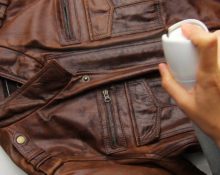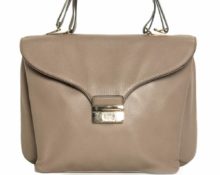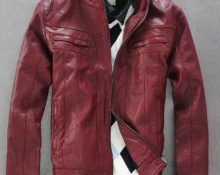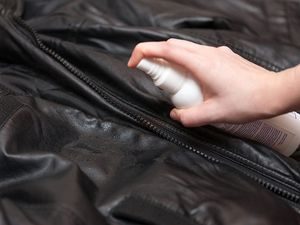 Leather is a universal material that allows you to create a variety of products, from shoes, clothes and outerwear to interesting decor. However, although it is quite wear-resistant, it requires constant care and, in case of damage, restoration.
Leather is a universal material that allows you to create a variety of products, from shoes, clothes and outerwear to interesting decor. However, although it is quite wear-resistant, it requires constant care and, in case of damage, restoration.
How to restore a leather jacket at home
Absolutely any material tends to wear out. Even high-quality leather can become damaged over time. This depends on the care of the product and the duration of wear. A leather jacket is especially susceptible to damage because it is an element of outerwear. Most often, the collar and cuffs with pockets are subject to restoration - since these are the parts of the leather jacket that are subject to the most friction.
You can repair a leather product by contacting a professional workshop, but their services are usually quite expensive.Don’t worry – you can deal with minimal damage yourself.
Fortunately, in the modern world there are many different materials and ways to use them at home and help increase the life of a leather product.
Types of damage
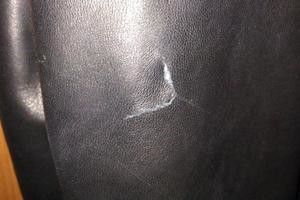
Deciding how to restore a leather jacket can only be determined by determining exactly how the damage was sustained.
The main types of damage that can be repaired at home:
- Breaks. An accidental snag on a nail or any other sharp object can ruin the appearance of the item.
- Scratches. Contact with third-party things, accidental scratches in public transport - all this makes the appearance of a leather jacket unsightly.
- Scuffs. Most often they form from constant friction with a bag or backpack, as well as in places that most often come into contact with other surfaces: for example, sleeves.
- Color fading. Externally, the jacket may not have any visible damage, but over time it may lose its original color in places exposed to light and external factors.
Therefore, in order for the jacket to serve for a long time, you should pay attention to its care and clean the leather on time, as well as use special products to maintain its condition.
Jacket repair
You can repair a leather jacket yourself if you are not afraid of damaging the product even more. It is best to have time to work and a comfortable workplace. It is very important to consider the availability of materials that are needed for restoration and to acquire them in advance.
Basic materials that may be needed and depend on the type of damage:
- Leather glue.
- Degreasing agent.
- Brush.
- Threads that match the color.
- Needle.
- Leather paint.
- Materials for the patch.
Materials should be used depending on the situation, but it is better to prepare them in advance. It is very important to act carefully and do the work efficiently - this way there is a chance that the restoration will be successful and the jacket will last for a long period of time.
Repairing rips and cuts
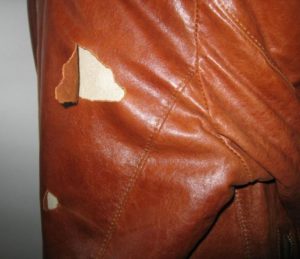 Damage such as ruptures is perhaps one of the most unpleasant moments that can upset any owner of a leather jacket. Most often it happens that the skin is torn either completely or at a corner.
Damage such as ruptures is perhaps one of the most unpleasant moments that can upset any owner of a leather jacket. Most often it happens that the skin is torn either completely or at a corner.
To get rid of the gap It is best to turn the product inside out, rip open the lining and find the cut. This area must be wiped with a special solution in order to degrease the skin.
Next, you should choose a piece of leather of the same color as the jacket material. Apply glue to the area around the tear and the cut patch. Place the tear on the leather jacket as close as possible and apply glue again. Then glue the patch to the tear site.
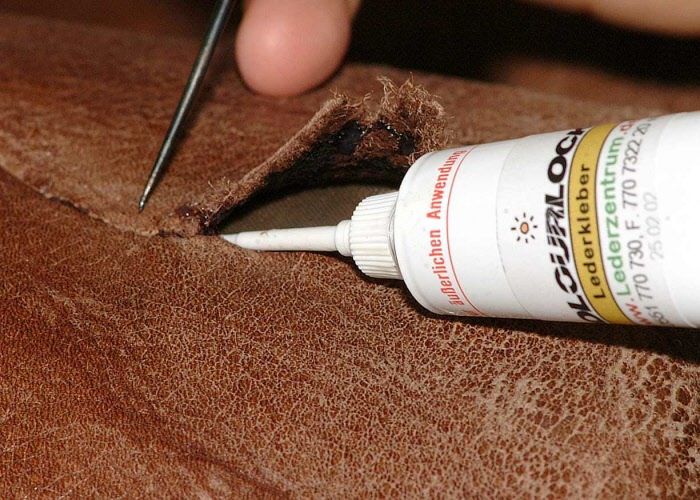
Important! The patch should be of such a size that it is a couple of centimeters larger than the tear in the jacket.
After carrying out such a restoration procedure, you need to put the glued area under a press for at least a day. Then all that remains is to sew up the lining and wipe the tear area on the outside of the product to get rid of traces of glue.
How to repair a hole in a leather jacket
Sometimes it happens that any damage may not be noticed immediately. One of the most unpleasant are holes, which can greatly damage the product, as they tend to spread over larger areas.
The main thing is that if damage is detected, immediately seal it with a plaster to avoid permanent damage to the appearance of the jacket.
Ways to fix a hole:
- One of the most radical methods of solving the problem of holes in the skin is stitching. This method cannot be avoided if the damage is quite extensive. You need to prepare threads of a suitable color, 2 patches (sew one of them on the outside of the product) and glue. Instead of a patch, you can use not too provocative decorative elements on the outside of the product.

- The second way to deal with small holes is to glue them. To do this, you need to thoroughly coat the edges of the tear on the wrong side with glue and fold them together, pressing them firmly against each other. After about 20 minutes you need to reapply the glue and glue the patch. Leave the product in this position for at least 24 hours under pressure.

In cases of large-scale tears in the leather in the jacket, it is better not to make independent attempts to restore the jacket, but to turn to professionals.
Elimination of abrasions, repair of collar
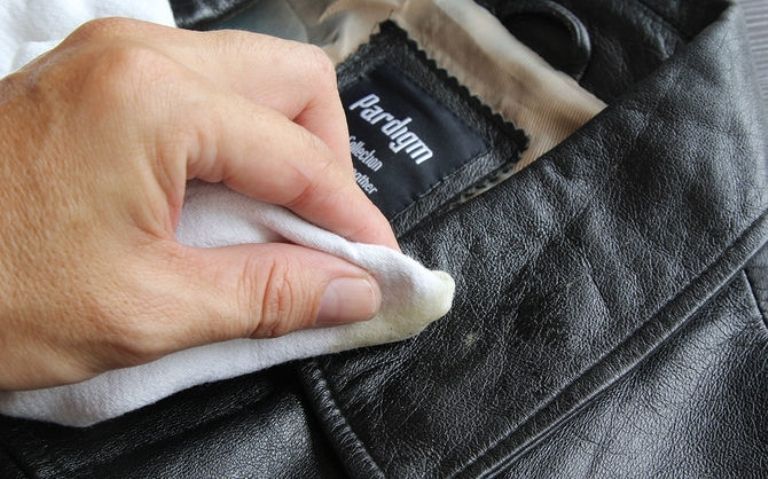 Scuffs are not a huge problem for leather jacket owners if you know how to deal with them. You can get rid of such problem areas on the product using cream, glycerin, paint or other auxiliary means:
Scuffs are not a huge problem for leather jacket owners if you know how to deal with them. You can get rid of such problem areas on the product using cream, glycerin, paint or other auxiliary means:
- Orange peel. The area of damage should be rubbed with the outside of the peel - this can help get rid of minor abrasions.
- "Liquid skin". It should be applied to the product according to the instructions on the packaging, having previously degreased the area of treatment. For best effect, apply the product twice.

- Baby cream. It must be applied to the worn parts of the product and left until completely dry.
- Dye. It should be applied in the same way as “liquid leather”, but the paint must be the same color as the jacket.
You can refresh your collar using baking soda. To do this, apply a small amount of it to a soft sponge and lightly rub the greasy area. Glycerin or paint can be used in the same way.
Important! It should be remembered that the correct selection of paint color is the key to success for the restoration of a product.
How to restore/refresh a jacket at home
Sometimes, of course, the question arises of simply updating the color of a leather jacket, and to do this, you first need to choose a product that is suitable for leather items.
The easiest way to refresh a product is with aerosol paint, which is sold in special stores. Before starting work, you need to clean the jacket from dust and dirt and only then start working.
A leather jacket should be hung on wide, comfortable hangers so that the material does not form wrinkles and it can be applied evenly. The paint should be sprayed at a distance of approximately 20 centimeters from the product at a fairly fast pace.
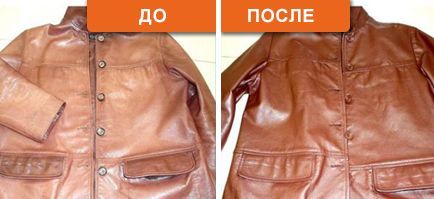
After complete painting, the jacket should be left in this position until the paint dries completely. If after this you find places where the paint has taken on worse, you can process the product again.
Prevention, care of a leather jacket
In order to maintain a leather jacket in good condition, you should use special care products that not only clean the leather, but also help restore the material, add shine to the material and carry out minimal disinfection.
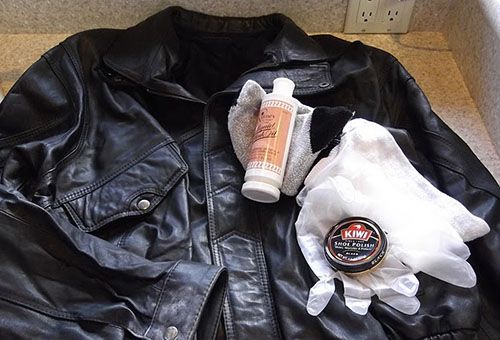
Among such funds are:
- Water repellent spray. It can help preserve the original appearance of the product.
- Wax. Its use helps make the material soft, which is an excellent prevention of cracking, especially in the cold season.
- Cleaning sponge. The special material does not damage the skin and cleans the product as delicately as possible.
- Foam cleaner. Gives extra shine and helps get rid of dirt.
These products are quite simple to use, but can easily extend the life of a leather product.
We hope that the tips presented in this article will help you maintain the appearance of your leather jacket in its original form for much longer.


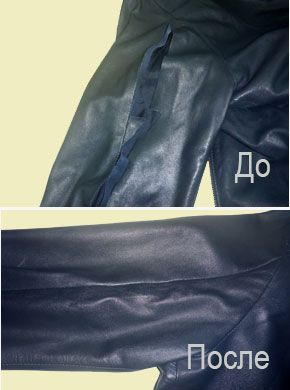


 0
0
